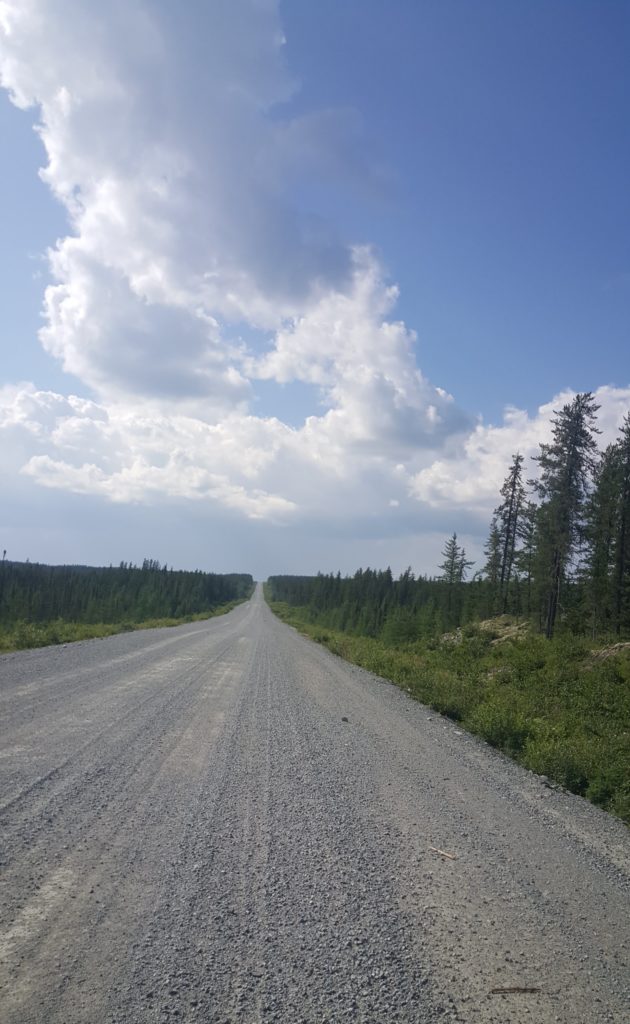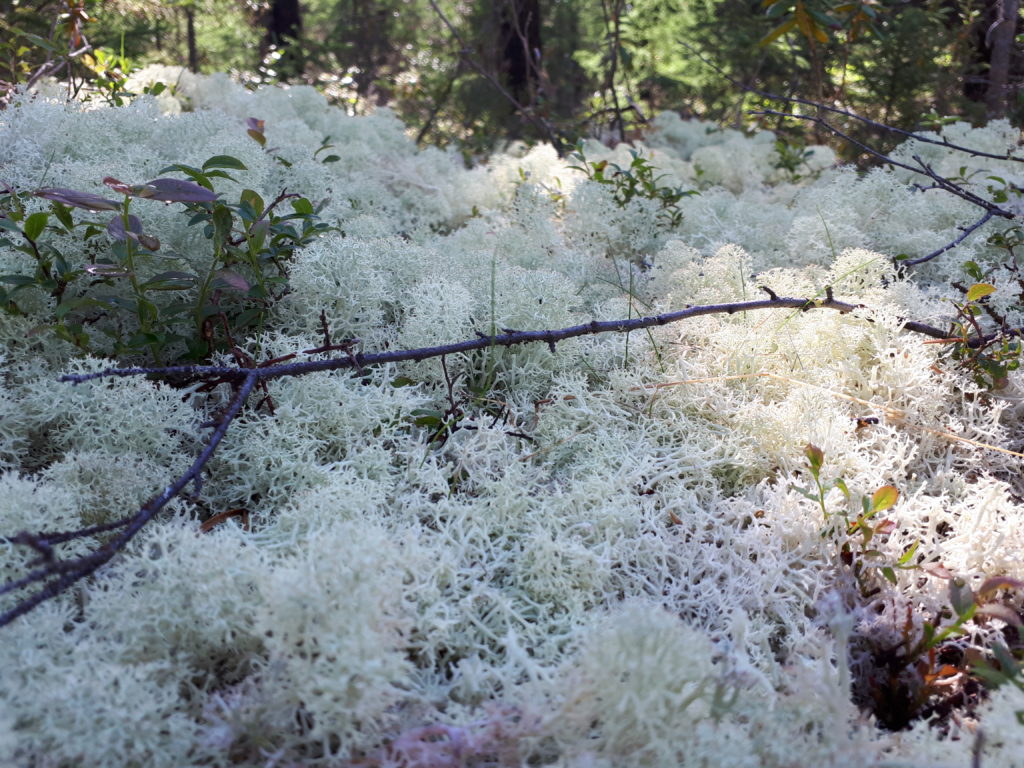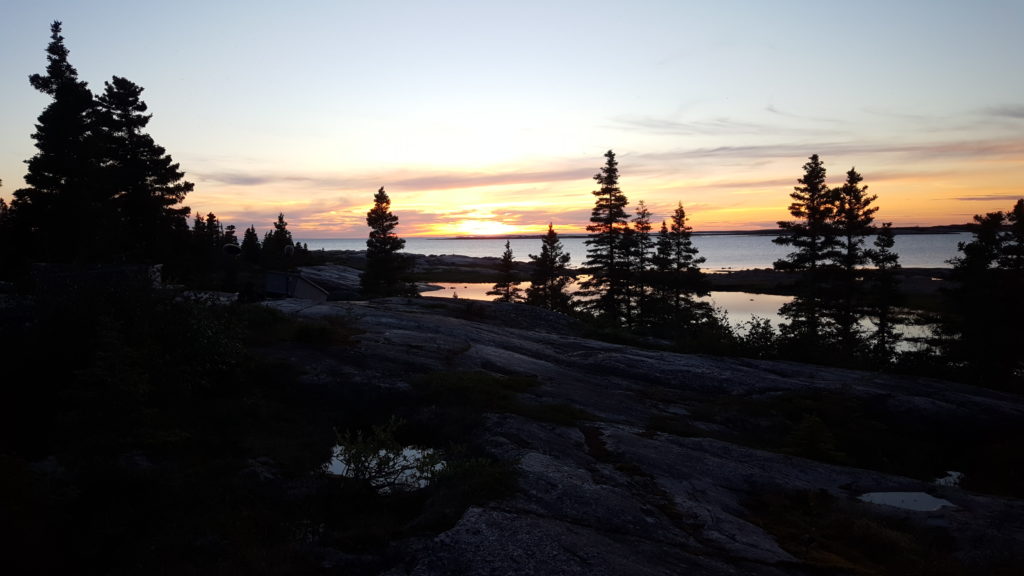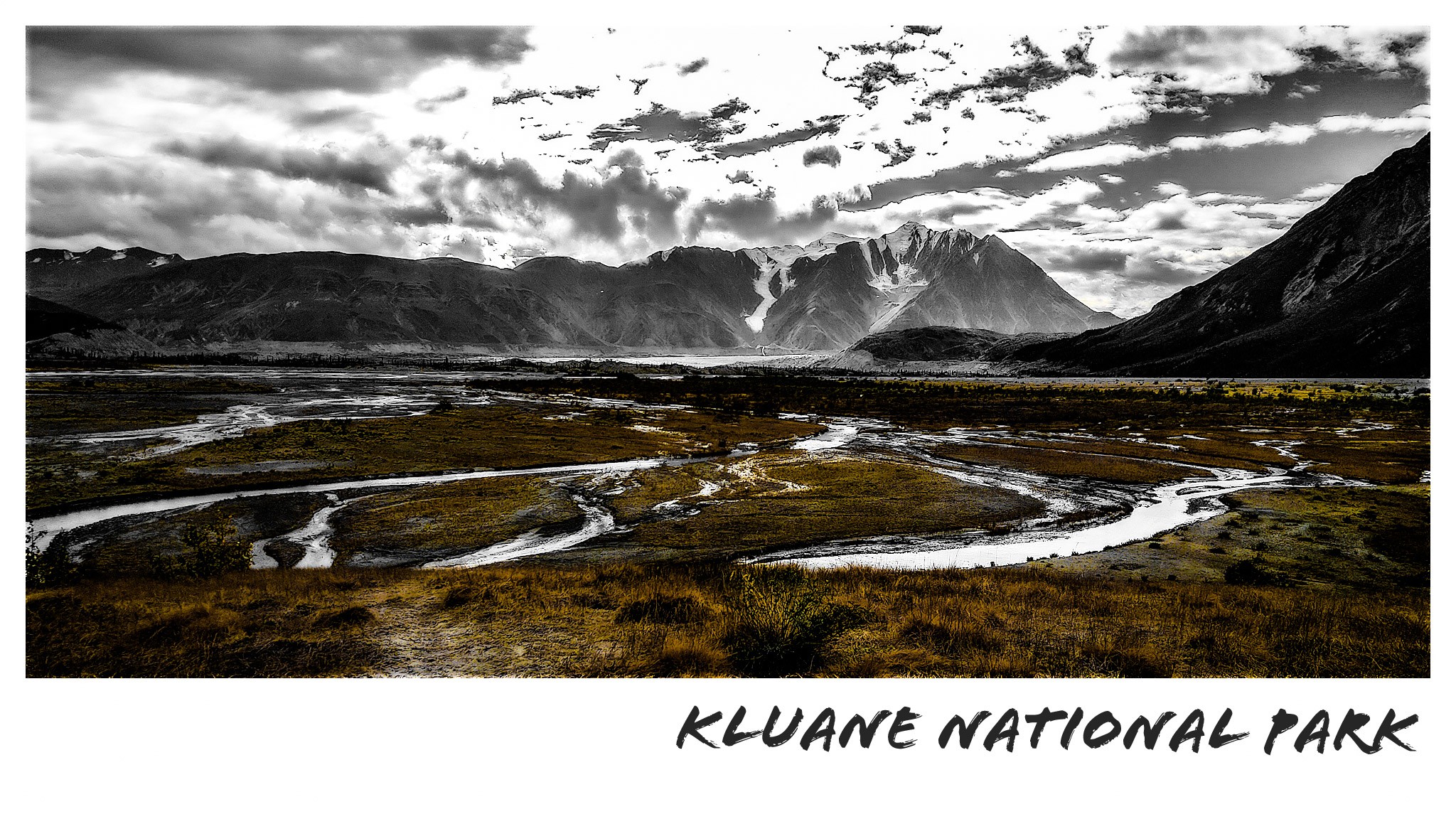
It was time to make a break inside the truck routine, stop swallowing bitumen and get into the Bear country for a few days. Going deeper into wilderness, would surely make recordings more isolated from human activity.
For this first attempt, we set our sights on the Kluane National Park in Yukon. The road to get there appetites us and we choose to go hiking 4 days, with this goal : a breathtaking view of the Kaskawulsh glacier. You have to go to the visitor center for registration, nobody escape from the complete prevention about risks of this hike : Bears, crossing creeks, hypothermia, all vital subjects are reviewed with small interrogation by the ranger. She’s looking satisfied about our speach, and let us leave with a bearproof container (to put food, garbage, any fragrant product).
It is with sound equipment, tent, food and other useless things, that we engulf ourselves on the trail. 22.5 km to reach the base camp, a good entry in itself. Still uncomfortable about the presence of the Grizzlies, we join forces with a companion, Roger. Make noise, speak loudly, this is the first weapon to avoid surprising the animal. Here is his territory and if you do not cross it, his presence is palpable.
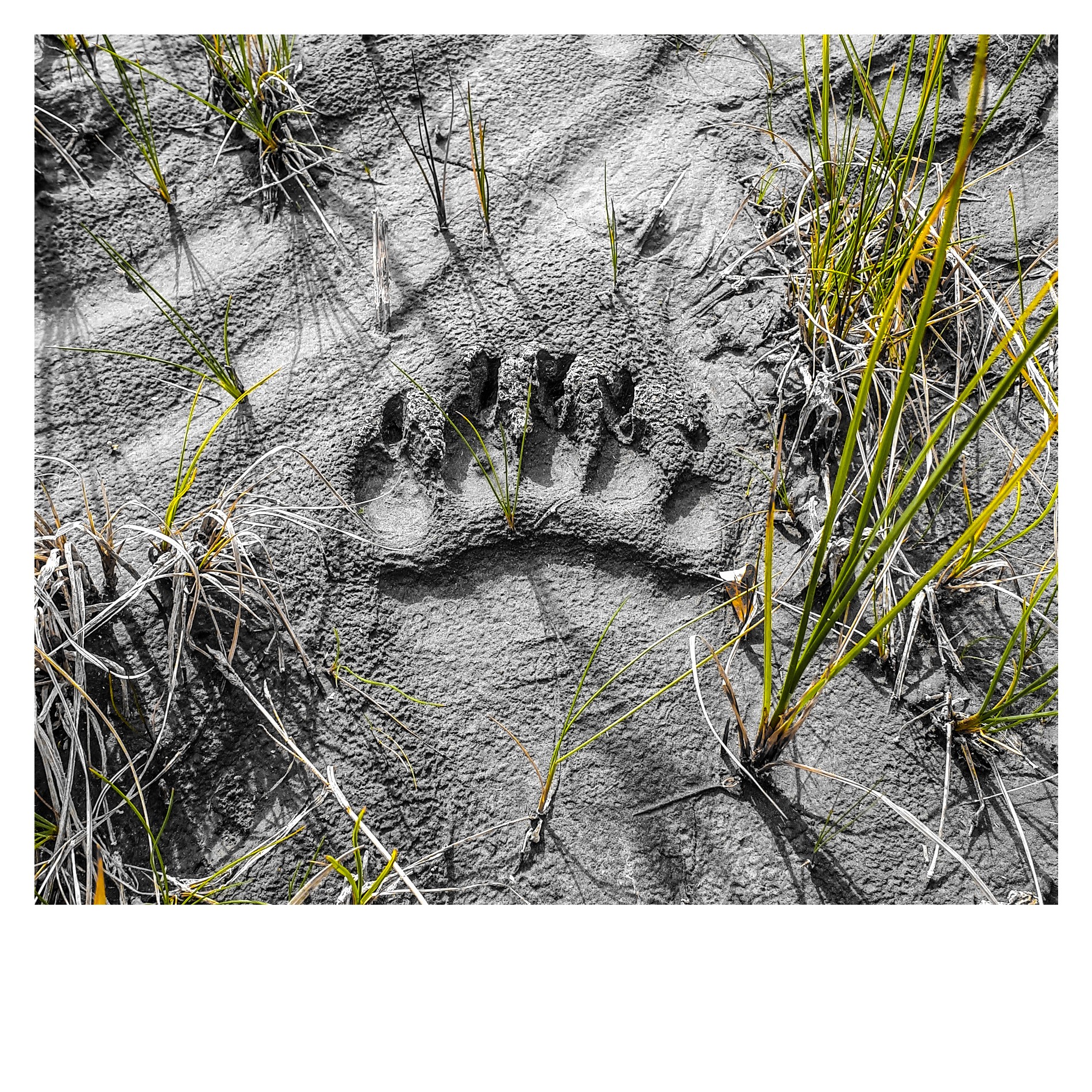 We hike between wet tundra and rocky mountain with scattered cairns. The last kilometers give us a beautiful climb, we finish and close these 8 hours of hiking.
We hike between wet tundra and rocky mountain with scattered cairns. The last kilometers give us a beautiful climb, we finish and close these 8 hours of hiking.
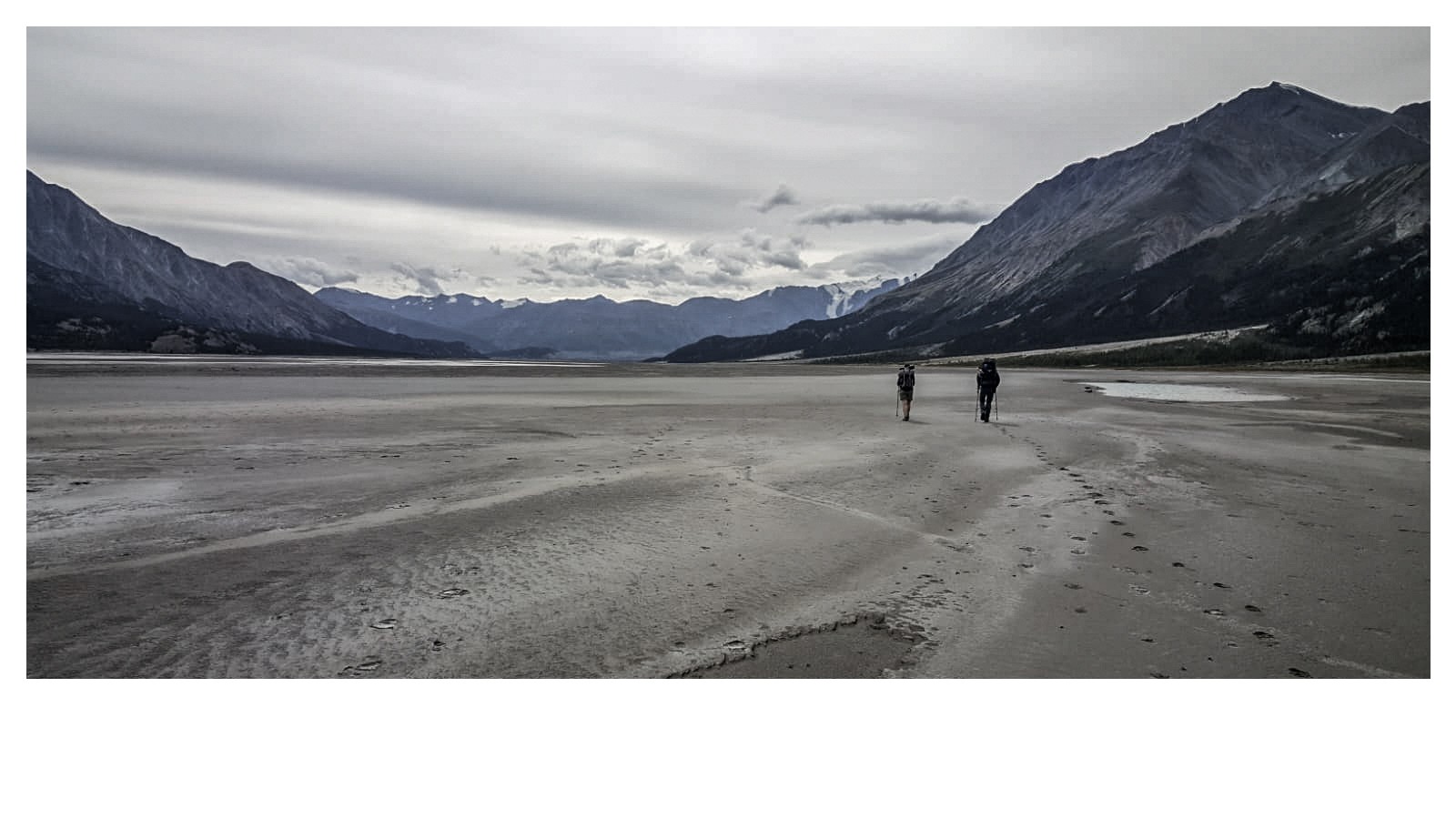 Some tents, but nobody at the camp; we’ll understand the next day why we have to wait until 7 pm to start seeing silhouettes far away.
Some tents, but nobody at the camp; we’ll understand the next day why we have to wait until 7 pm to start seeing silhouettes far away.
The second day will be the ascent to the glacier. A small round trip of 20 km with many surprises. Initially, the multiple creek to cross. Glacial but shallow, we will find them with a much higher level on our return … Then, it is an ultra climb, 1200 m elevation over 4 km, on a hilly and vertiginous trail, which raises us, painfully to the mountain peak. The sound equipment has made the trip with us, we get rid of time for a Phonography :
The scene is obviously spectacular, but I was already thinking about the return, the steep slope, the ridges without guardrails, the river that was gaining power. To summarize the descent, I would say that I cried a thousand times … the physical was not at the rendezvous and the mind had left me for a while… Having no choice but to go down, I gathered my mind and remained focused at every step. Once down, the river held its promise, it had changed shape and tempo. We choose a place where it split and loses a little power. One throws himself, facing the current, stick straight ahead. Some creeks are deeper, and the bubbling water dazes me. The ranger had said, “never look at the water”. We cross the last creek that definitely freeze our feet. We arrive at the camp at 7 pm, a day of 10 hours of walking.
“You will be happy to have a day-off before leaving”. We were told that too and that’s exactly what we had to do on this third day … and some sound recordings too.
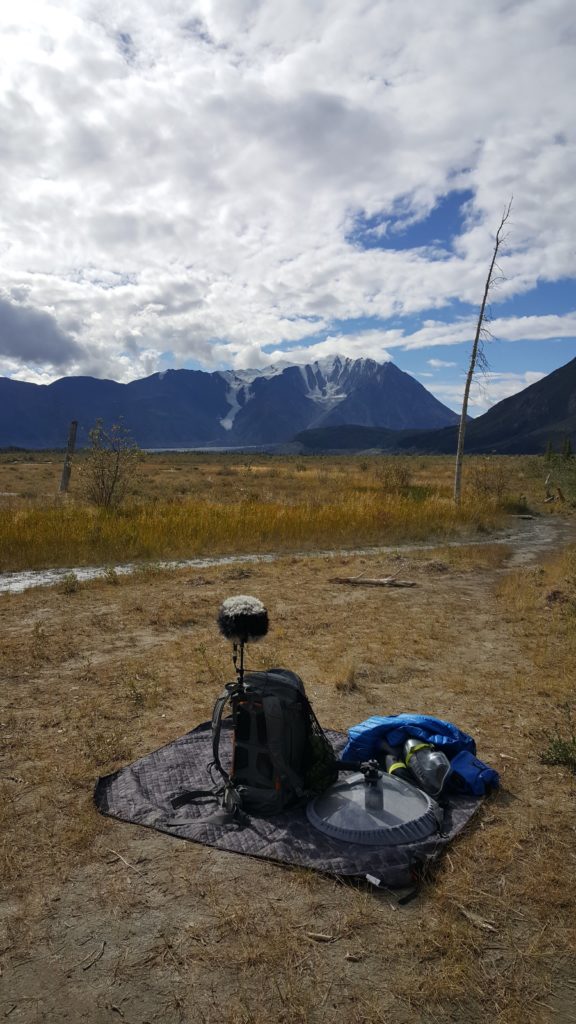
The last day could have been simple and without pitfalls. But too tired, we decide to “ziber” to save time. A very bad idea, especially during rainy weather. Do not think, go straight ahead, make continuous noise and run to get out of this uninspiring place. We find the trail back (thank you GPS), trembling, muddy, but so happy to see the end of the hike (I spare you the episode of the man, hyper freaked out, who saw the man, who saw the Grizzly, adding a layer of adrenaline).
At each end of the hike (I practice the thing regularly.), I always feel this feeling of satisfaction after having drooled. We must not lie, we did not have the level on that one. With a little less weight in the bag and more training, maybe. For the record, a group that we saw leaving the morning during our day off, returned very late. One of the girls was carried away by the current on 200 m, with its bag (from where the importance to detach it). In shock, on the edge of hypothermia, scratched everywhere, his story puts us all in our place, very inexperienced in this wilderness.
“Yukon, larger than life”, yes indeed.
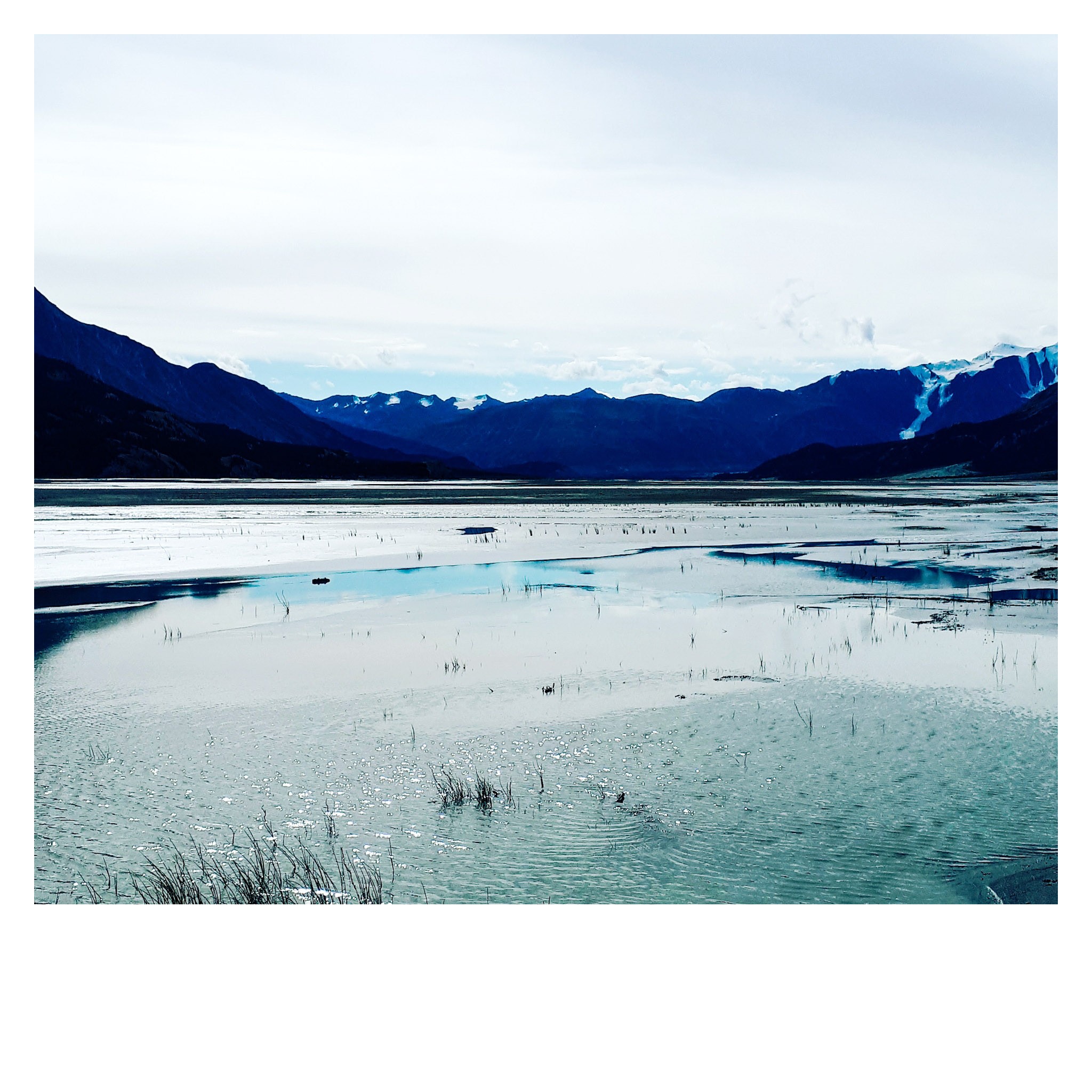
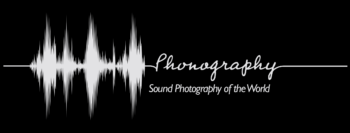
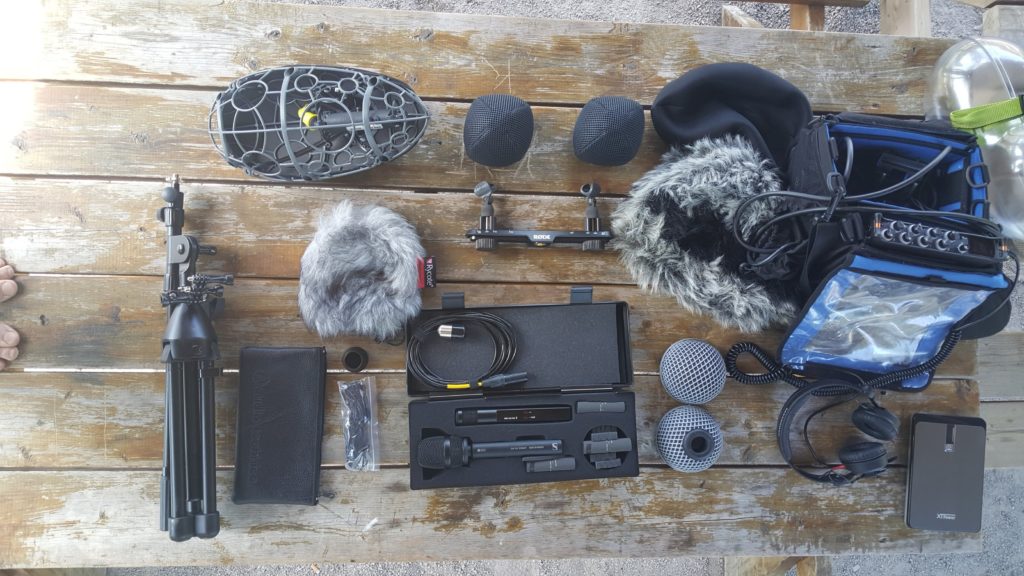 The question of microphones setup, haunted us from the beginning of this project …. for a budget, what microphones to take with us? what will be the right combination of microphones that will be as flexible as possible, but also meet all our criteria :
The question of microphones setup, haunted us from the beginning of this project …. for a budget, what microphones to take with us? what will be the right combination of microphones that will be as flexible as possible, but also meet all our criteria :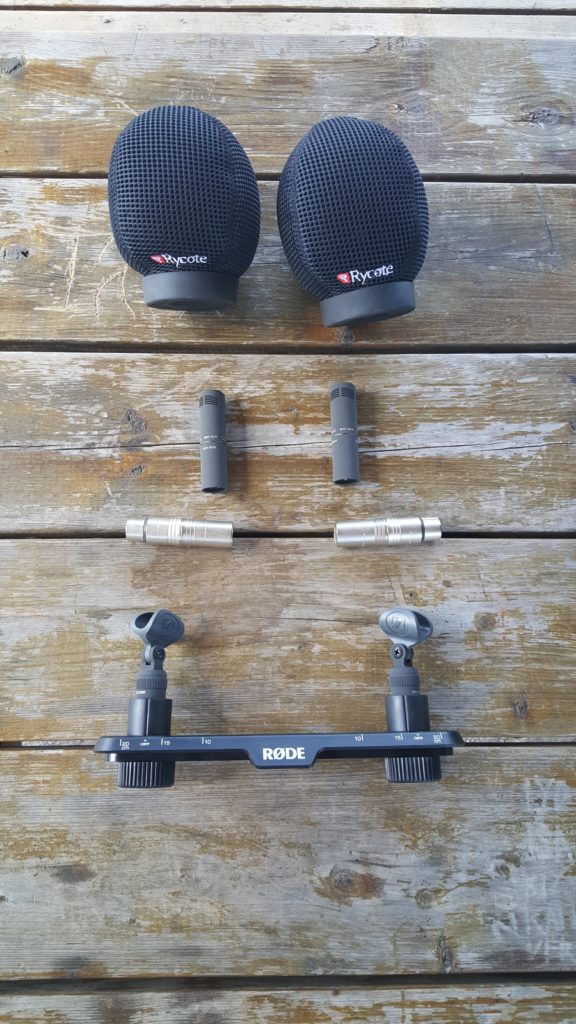
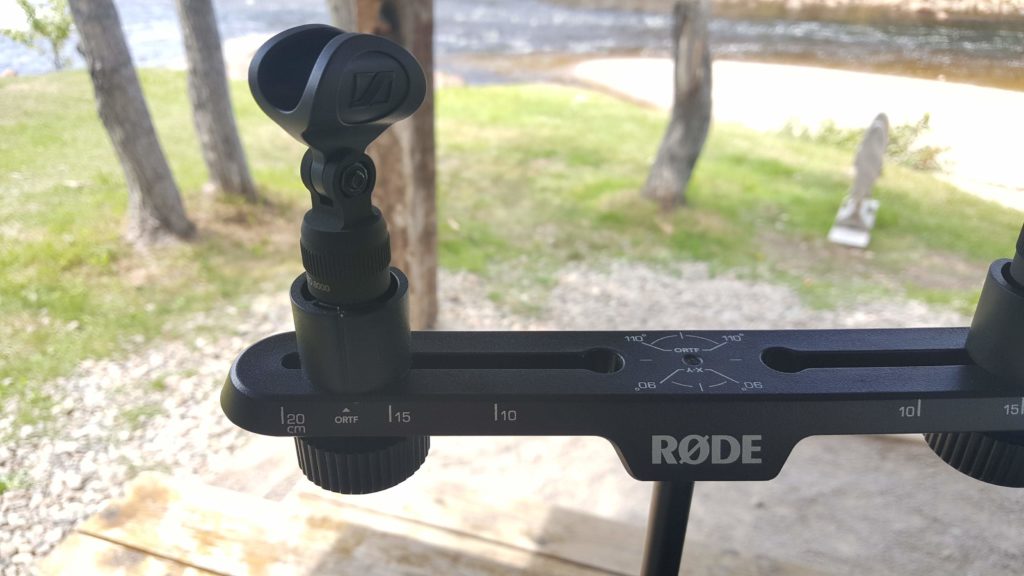
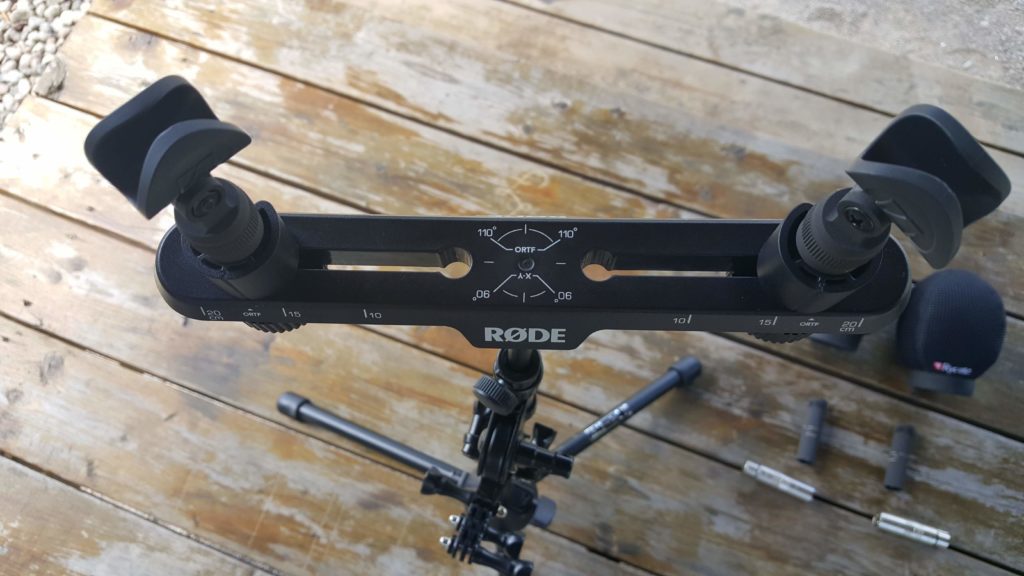
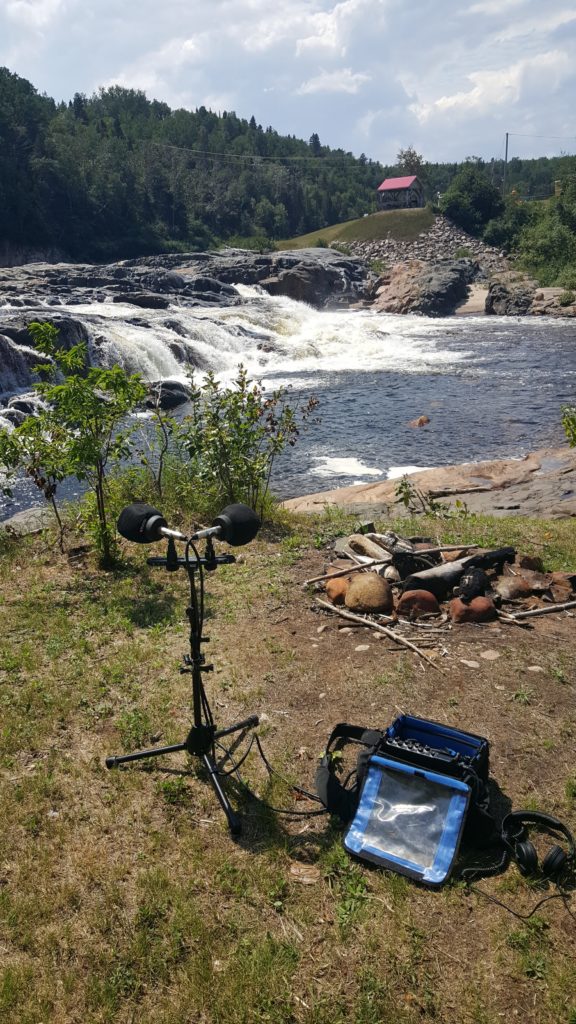 Then the question is asked for the surround (5.0), either to buy x3 mkh 8040, or to use a more economical and flexible technique, the double MS (DMS) by adding a figure 8 microphone, to the existing MKH 8040. This is the last solution we chose because it is more economical (reuse of the MKH8040) and more flexible, and very compact. So we naturally chose a Sennheiser MKH 30-P48, to stay in the same microphone coloration. The only regret is that this microphone is not really compact …. The DMS configuration is well known from Schoeps, with solutions of suspensions and protections against wind, but nothing planned for Sennheiser ….. Fortunately, we found our happiness at Cinela (http://www.cinela.fr/), manufacturing high-end suspension and wind protection that makes suspensions tailored to the needs of the customer. In addition Cinela is a French brand, established in Paris. Everything is provided in the kit to record in DMS, in all conditions:
Then the question is asked for the surround (5.0), either to buy x3 mkh 8040, or to use a more economical and flexible technique, the double MS (DMS) by adding a figure 8 microphone, to the existing MKH 8040. This is the last solution we chose because it is more economical (reuse of the MKH8040) and more flexible, and very compact. So we naturally chose a Sennheiser MKH 30-P48, to stay in the same microphone coloration. The only regret is that this microphone is not really compact …. The DMS configuration is well known from Schoeps, with solutions of suspensions and protections against wind, but nothing planned for Sennheiser ….. Fortunately, we found our happiness at Cinela (http://www.cinela.fr/), manufacturing high-end suspension and wind protection that makes suspensions tailored to the needs of the customer. In addition Cinela is a French brand, established in Paris. Everything is provided in the kit to record in DMS, in all conditions: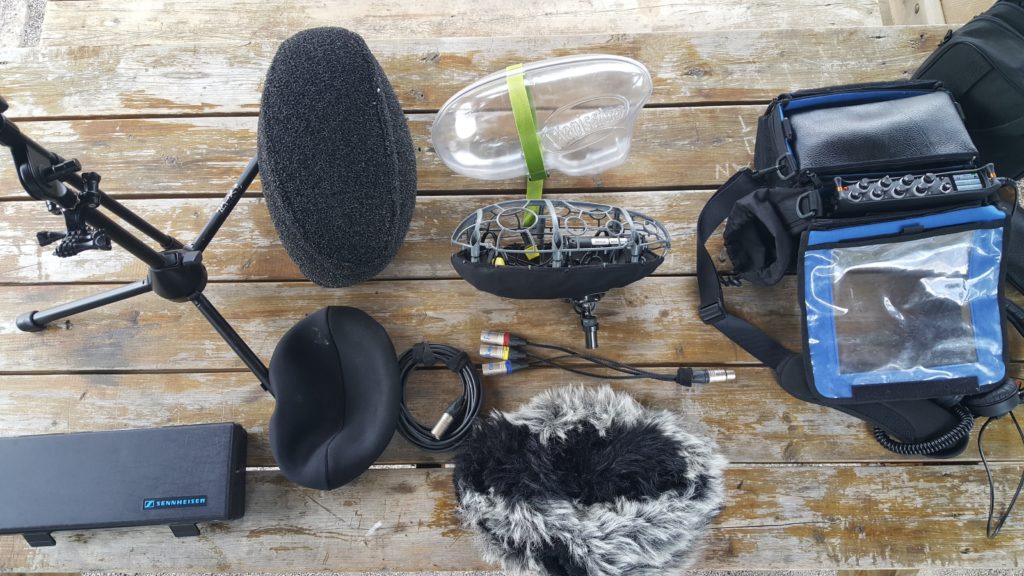 We still had to find a config for recording animal, or simply allowing to take sounds in a more distant way, to have more focus on sound. Ideally, we would take with us a shotgun microphone and a parabola, but the budget had to make us a difficult choice and we choose the parabola : a Telinga (http://www.telinga.com/) coupled with a omnidirectional MKH 8020 (Sennheiser).
We still had to find a config for recording animal, or simply allowing to take sounds in a more distant way, to have more focus on sound. Ideally, we would take with us a shotgun microphone and a parabola, but the budget had to make us a difficult choice and we choose the parabola : a Telinga (http://www.telinga.com/) coupled with a omnidirectional MKH 8020 (Sennheiser).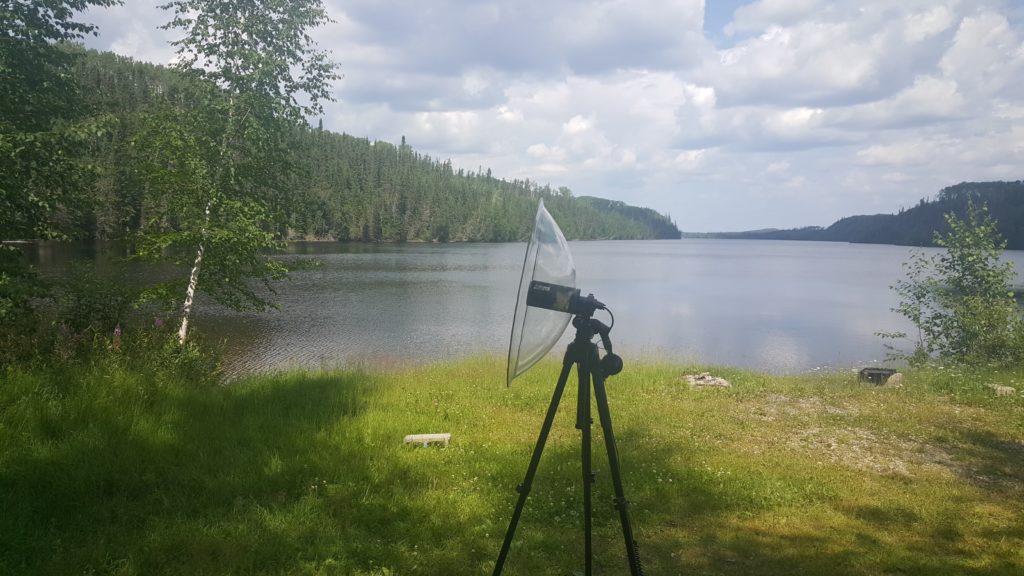
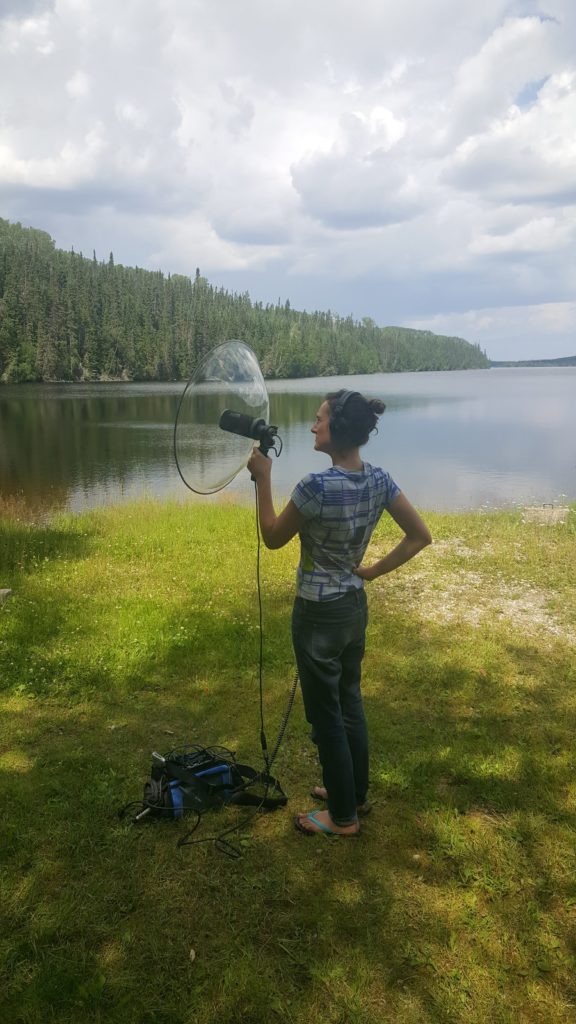 We also wanted an ambisonic microphone, to be able to record in B format, for virtual reality and 360 ° movies. At the time of departure and at an affordable price, there was only Sennheiser AMBEO on the market (Rode just released yet, an ambisonic mic, through the acquisition of Soundfield: http://fr.rode.com/nt-sf1 )
We also wanted an ambisonic microphone, to be able to record in B format, for virtual reality and 360 ° movies. At the time of departure and at an affordable price, there was only Sennheiser AMBEO on the market (Rode just released yet, an ambisonic mic, through the acquisition of Soundfield: http://fr.rode.com/nt-sf1 )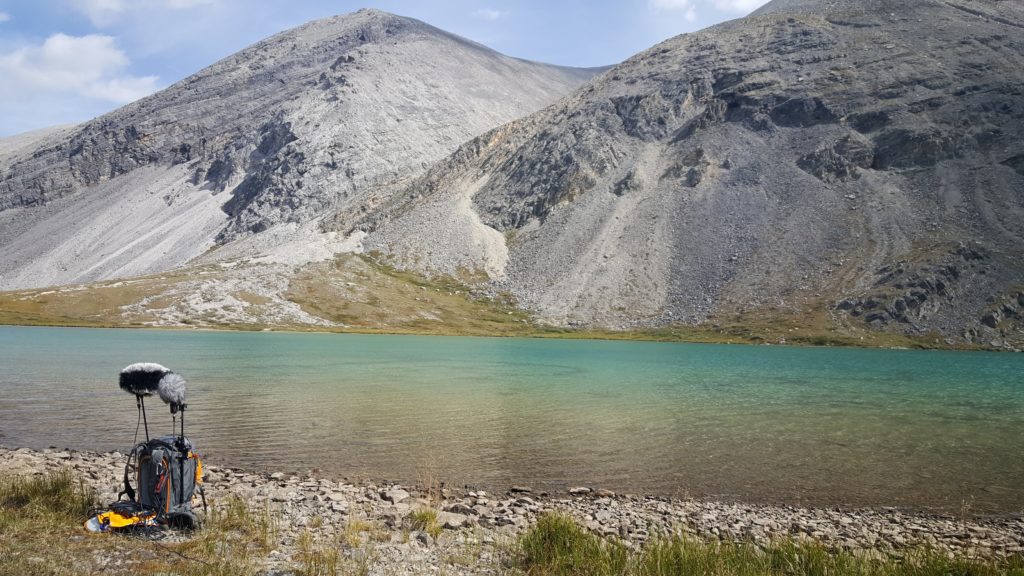 We completed the setup with Aquarian X2A-XLR hydrophone, which we already had, with the idea of recording marine mammals, but also the crackling of glaciers. In addition, this microphone also serves as a micro-contact. (http://www.aquarianaudio.com/h2a-xlr-hydrophone.html)
We completed the setup with Aquarian X2A-XLR hydrophone, which we already had, with the idea of recording marine mammals, but also the crackling of glaciers. In addition, this microphone also serves as a micro-contact. (http://www.aquarianaudio.com/h2a-xlr-hydrophone.html)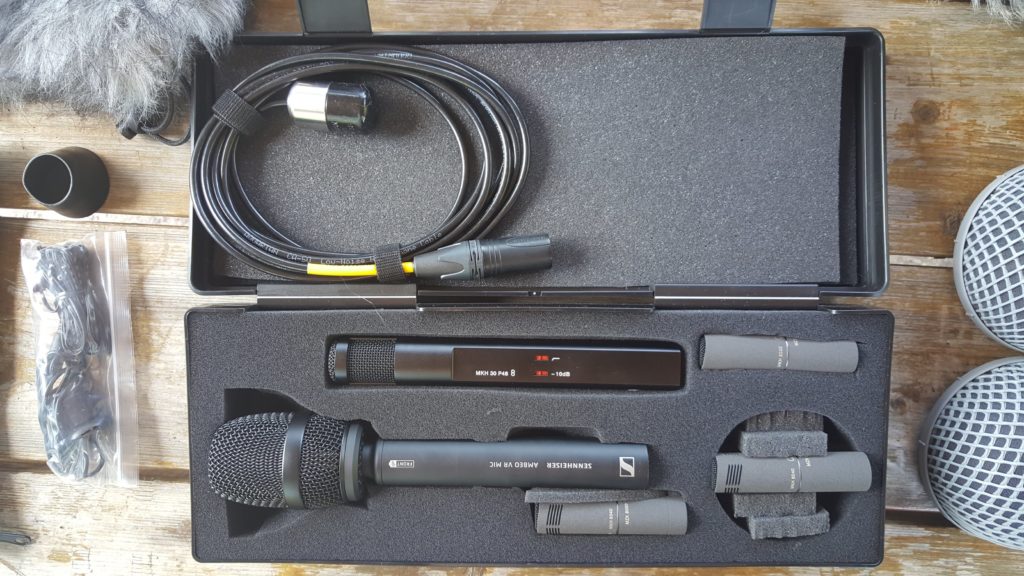 Here is our config, I hope it will allow us to respond to a maximum of situations, I will wrote in future articles, a description of each microphones, and their uses.
Here is our config, I hope it will allow us to respond to a maximum of situations, I will wrote in future articles, a description of each microphones, and their uses.